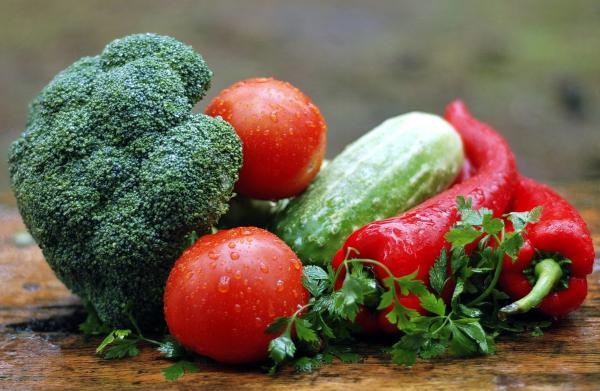In October, a viral TikTok video urged viewers to buy an essential oil vegetable wash to cleanse their produce of harmful “pesticides and environmental toxins.” The central claim in the clip is baseless, as others have already explained, but here's yet another reason you shouldn't worry about pesticides: the chances that you're exposed to harmful levels of any chemical through food are essentially zero.
The FDA recently released the latest results from its Pesticide Data Monitoring program. This year's numbers are in no way surprising; they're almost identical to the previous report's conclusions. But if you're worried that toxic fruits and vegetables are lurking in the produce section, the agency's latest conclusion may offer you some reassurance:
FDA found that 98.7% of domestic and 89.1% of import human foods were compliant with federal standards. No pesticide chemical residues were found in 42.4% of the domestic and 49.4% of the import samples.
As an added bonus, the FDA reported that animal products (including pet foods) posed a similarly minuscule risk, meaning you're probably not going to harm your puppy or your stupid cat (I can say that 'cause I own a cat) with pesticide-laced food or treats:
FDA also analyzed 365 animal food samples (127 domestic and 238 import samples) for pesticides. The Agency found that 98.4% of domestic and 95.4% of import animal food samples were compliant with federal standards. No pesticide chemical residues were found in 40.9% of the domestic and 43.7% of the import animal food samples.
What about the “non-compliant” samples?
A few comments are in order here. The EPA sets a safety standard for pesticide residues in food called a “tolerance.” Some samples inevitably fail to meet this rigorous metric, but regulators have planned for that outcome. As plant pathologist Dr. Steve Savage has pointed out:
The tolerance is set to insure that there is a substantial margin of safety (typically 100-fold) between the allowed residue and any level to establish reasonable certainty of no harm to humans. EPA then sets limits on how much of the pesticide can be applied and how close to when the crop is going to be harvested so that the tolerance is unlikely to be exceeded when farmers use the product.
So, on the off chance that you come across, say, a tomato that exceeds a pesticide tolerance (different chemicals have different tolerances), it's still extremely unlikely that you or your family will experience any harm. In any case, the FDA has the authority to remove products from the market that can pose a health risk.
Our food supply is safe
Here are a few other important details about pesticide monitoring in the US:
- The FDA focuses on the “most frequently consumed or imported” products, meaning the agency probably evaluates your preferred foods.
- Sampled products are also chosen based on their volume and market value.
- Domestic and imported products with past violations are subjected to increased scrutiny or “focused sampling.”
- The agency carefully considers the “chemical characteristics and toxicity of the pesticide(s) used.”
- The Pesticide Residue Monitoring Program only evaluates raw agricultural commodities. But the FDA's Total Diet Study, which we've discussed in the context of baby-food safety, monitors pesticide residues and other toxic elements in "table-ready foods."
- The USDA and some individual states, like California, have their own pesticide residue monitoring programs, offering additional surveillance to ensure food safety.
All that to say, America's food supply is quite safe. Feel free to ignore attention-hungry activist groups that suggest otherwise.




